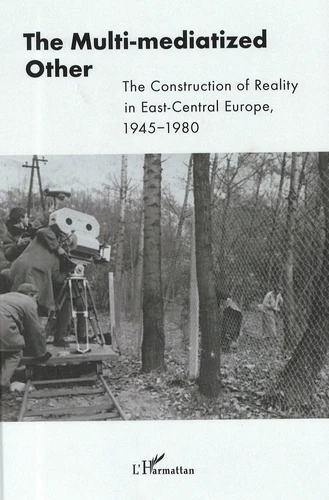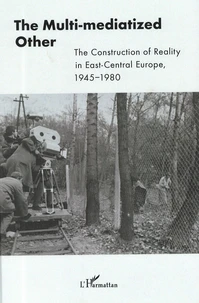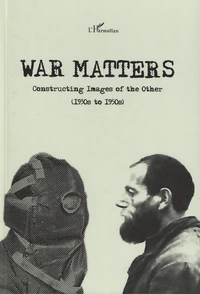- Accueil /
- Kamila Baraniecka-Olszewska
Kamila Baraniecka-Olszewska

Dernière sortie
The Multi-mediatized Other
During the period of the 1940s to the 1970s, the number of media and their influence were continually expanding. New media-film technology and television-developed and started to occupy people's everyday lives. A history of visual media shows that early on images took the form of drawings, paintings, sculptures, caricatures, and posters and then expanded through photography, press, cinema, television.
Images were experienced rarely, at first, later were more often published in newspapers, journals, leaflets, and posters to become an everyday consumption in the form of the television. Initially, broadcasting took only a few hours in the evening and on one channel only ; later it expanded to all day programming on multiple channels. Television replaced other sources of information, offering the public more and more news from the world.
This fact has lead us to the pivotal question of what creates the experienced reality and how ? How was the everyday human experience shaped, and what was the role of the visual media in it ? In order to find answers to these questions, we have to look at the characteristics of the particular kinds of visual media.
Images were experienced rarely, at first, later were more often published in newspapers, journals, leaflets, and posters to become an everyday consumption in the form of the television. Initially, broadcasting took only a few hours in the evening and on one channel only ; later it expanded to all day programming on multiple channels. Television replaced other sources of information, offering the public more and more news from the world.
This fact has lead us to the pivotal question of what creates the experienced reality and how ? How was the everyday human experience shaped, and what was the role of the visual media in it ? In order to find answers to these questions, we have to look at the characteristics of the particular kinds of visual media.
During the period of the 1940s to the 1970s, the number of media and their influence were continually expanding. New media-film technology and television-developed and started to occupy people's everyday lives. A history of visual media shows that early on images took the form of drawings, paintings, sculptures, caricatures, and posters and then expanded through photography, press, cinema, television.
Images were experienced rarely, at first, later were more often published in newspapers, journals, leaflets, and posters to become an everyday consumption in the form of the television. Initially, broadcasting took only a few hours in the evening and on one channel only ; later it expanded to all day programming on multiple channels. Television replaced other sources of information, offering the public more and more news from the world.
This fact has lead us to the pivotal question of what creates the experienced reality and how ? How was the everyday human experience shaped, and what was the role of the visual media in it ? In order to find answers to these questions, we have to look at the characteristics of the particular kinds of visual media.
Images were experienced rarely, at first, later were more often published in newspapers, journals, leaflets, and posters to become an everyday consumption in the form of the television. Initially, broadcasting took only a few hours in the evening and on one channel only ; later it expanded to all day programming on multiple channels. Television replaced other sources of information, offering the public more and more news from the world.
This fact has lead us to the pivotal question of what creates the experienced reality and how ? How was the everyday human experience shaped, and what was the role of the visual media in it ? In order to find answers to these questions, we have to look at the characteristics of the particular kinds of visual media.
Les livres de Kamila Baraniecka-Olszewska

War Matters. Constructing Images of the Other (1930s to 1950s)
Dagnoslaw Demski, Liisi Laineste, Kamila Baraniecka-Olszewska
E-book
19,99 €

The Multi - mediatized Other. The Construction of Reality in East - Central Europe, 1945 - 1980
Dagnoslaw Demski, Anelia Kassabova, Ildiko Sz Kristof, Liisi Laineste, Kamila Baraniecka-Olszewska
Grand Format
38,00 €

War Matters. Constructing Images of the Other (1930s to 1950s)
Dagnoslaw Demski, Liisi Laineste, Kamila Baraniecka-Olszewska
26,00 €
